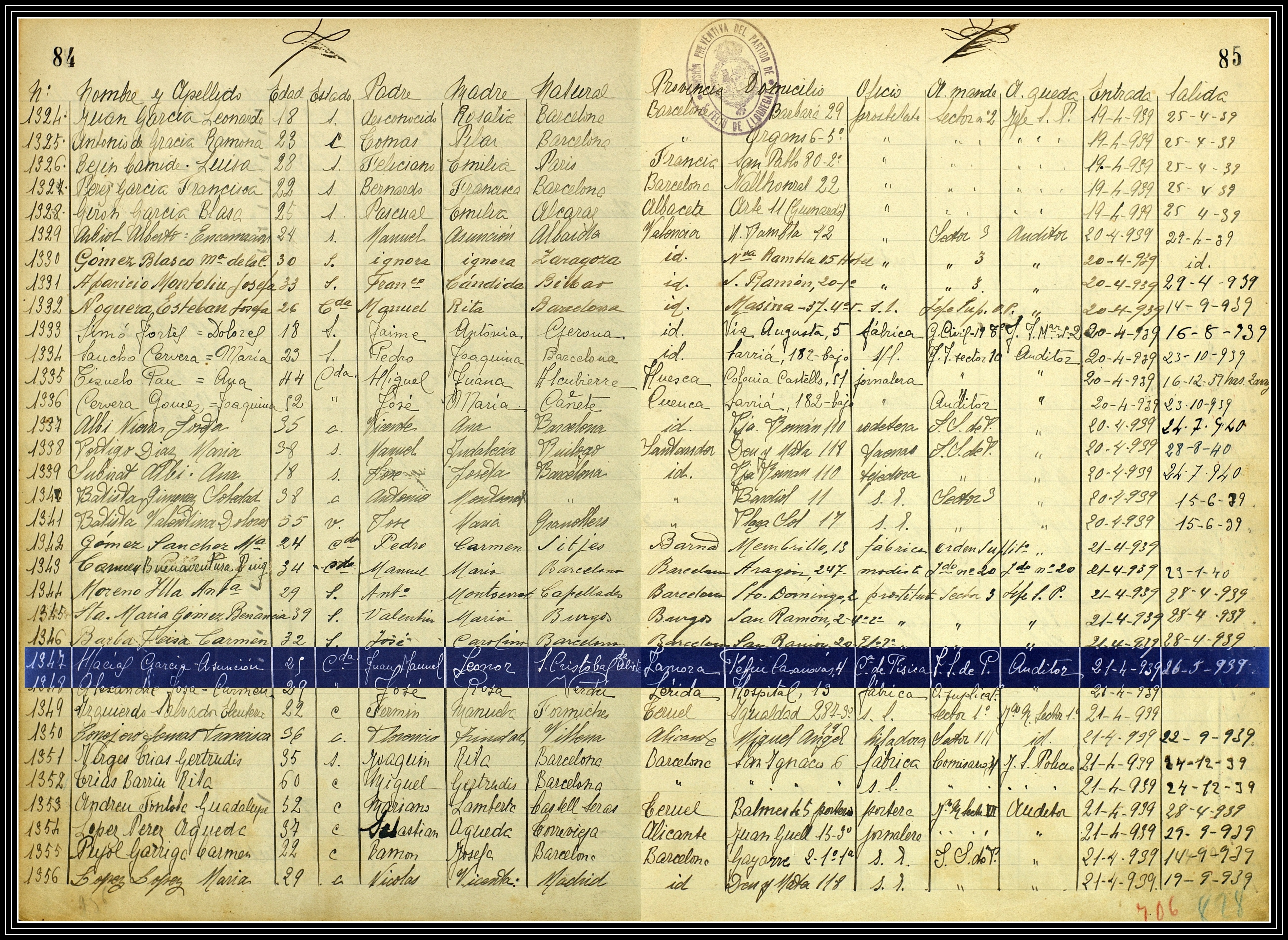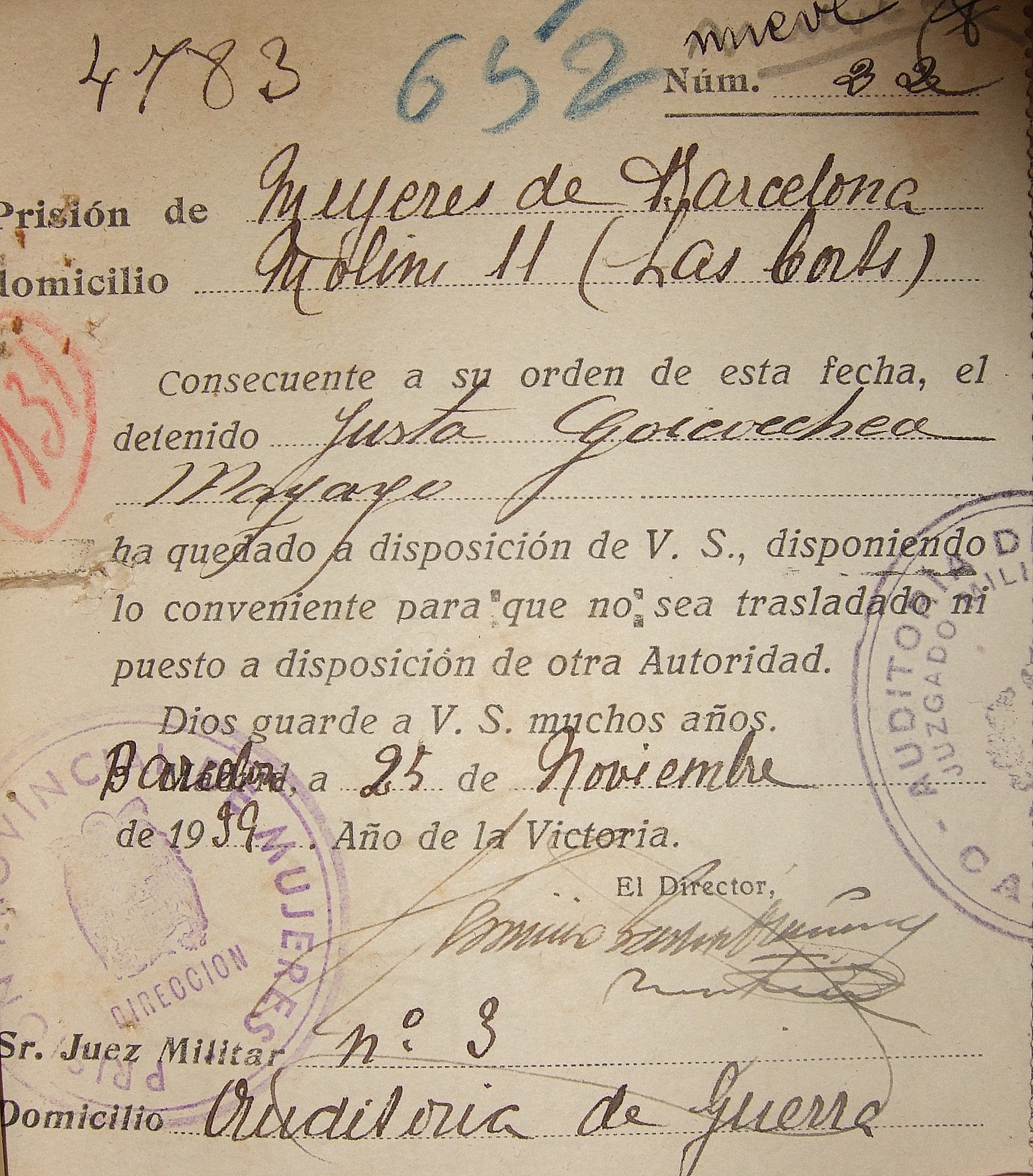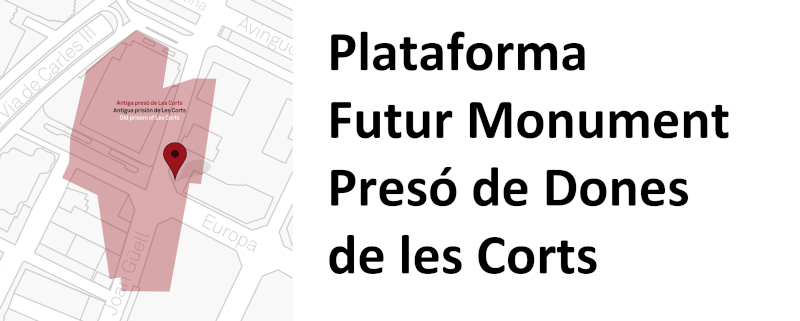Over the last months of the war, at the Correccional General de Dones (General Correctional for Women), the number of inmates was reduced to 50 with the aim to ease off the overcrowding conditions. The last monthly official count, that of 1939, stopped abruptly on 19 January -a week before the occupation of the city by the rebel forces-, reported a figure of 527 prisoners.
The prisoners were nonetheless kept inside until the morning of 26 January –the day of the official occupation of the city-, when Marcel Junod, the delegate of the International Red Cross, intervened towards their evacuation. His intervention, at the behest of the prison’s director Isabel Peyró, was decisive to end the standoff at a point when the prison was being surrounded by family members very keen on stopping any last-minute transfer ordered by the retreating Republican Army.
Three days afterwards, on Sunday 29 January, the first woman entered the Prisión Provincial de Barcelona, the first of a series of incarcerations following arrests made by agents of the SIPM (Political and Military Information Service), members of Falange and policemen: 471 arrivals in February alone, and 572 in March.
Except for a handful of prison officers under investigation by the new authorities, the prison was now managed by a temporary director -under the command of the Presó Model- and a team of Sisters of Charity of Saint Vincent de Paul, who were 12 in number by the end of 1940.
Thanks to the prison book of entries of 1939, we know that between 29 January 1939 and 6 October, a total of 3.267 women arrived there. The highest figure was reached on 17 August 1939, with 1.806 and 43 children, in an area projected to accomodate 100 people.
The book of entries reveals basic information about these women, a varied assortment made up largely of working-class people, with origin in the countryside (peasants, labourers) although the majority came from urban areas: industrial workers, domestic service workers, peddlers, seamstresses, concierges, telegraph operators, railway crossing keepers…
The documents speak about a female doctor, the internationalist German Jew Carlotta Margolin, who had been an ‘antifascist prisoner’ in 1937, arrested again twice -1939 and 1940-, and a professor of Physics, Asunción Macías, from Zamora, purged and permanently banned from teaching the following year.
The teachers were the most represented group, with 28 national teachers and a primary school inspector jailed in 1939, as well as the nurses, 50 between 29 January and 6 October 1939.
Prison officers were also badly hit, with a total of 27 incarcerations. Practically all the officers at Les Corts and Sabadell appointed during the war via competition examination were affected. These appointments were implicitly voided with the abolition of the autonomies system formally decreed in April 1938.
Anyway, the most severely punished group was that of the concierges with 107 entries. In a war situation as the one experienced, concierges were mobilised to watch over buildings and help identify those targeted. With the turn of events, they fell victim of the accusations brought forward by numerous tenants.
There were also mayoresses and town councilwomen jailed in 1939: the teacher Joana Matia Borau, a member of the PSUC (Unified Socialist Party of Catalonia), who was mayor of Alpens (Barcelona) in 1936, and the first town councilwoman of L’Hospitalet de Llogregat, Justa Goicoechea Mayayo, a member of ERC (Republican Left of Catalonia)..
Even two pelotaris –Juanita Nieto and Daniela Manero- were jailed, in a time when Pelota Vasca players (the Basque ball game) were the first professional sportswomen on record.
Fuentes:
ARXIU NACIONAL DE CATALUNYA (ANC), Fons 200, Centre Penitenciari de Dones de Barcelona (CPDB), Llibre de registre de filiacions, UC 6865, 1939; ARXIU MUNICIPAL ADMINISTRATIU (AMA). Distrito III. Tomo 45. Hoja 229. 1940; Ley de 5 de abril de 1938 (BOE, 8-4-1938).
JUNOD, M. (1963): Le troisième combattant. Paris; HERNÁNDEZ HOLGADO, F. (2011): La prisión militante. Las cárceles franquistas de mujeres de Barcelona y Madrid (1939-1945), Universidad Complutense de Madrid, PhD thesis; Valentín, M. (2014): “El exilio judeoasquenazí en Barcelona (1933-1945): Un rompecabezas que pide ser resuelto”, en http://mozaika.es/magazine/el-exilio-judeoasquenazi-en-barcelona-1933-1945-un-rompecabezas-que-pide-ser-resuelto/ [2020.01.06]; NEGRÍN-FAJARDO, O. (2006): “La depuración del profesorado de los Institutos de Segunda Enseñanza. Relación de los expedientes resueltos por el Ministerio de Educación Nacional (1937-1943)”, en Historia de la Educación, 25 (24): 503-542; DE PRADO HERRERA, M. L. (2019): “Universitarias en Salamanca en el primer tercio del siglo XX: cuantificación y perfiles”, in Culture & History Digital Journal, 8 (1), doi: https://doi.org/10.3989/chdj.2019.005; NIELFA, G. (Coord.) (2915): Mujeres en los gobiernos locales. Alcaldesas y concejalas en la España contemporánea. Madrid; ARNAU, A. y VALL JOSEP (2019): “Justa Goicoechea. Primera regidora de L’Hospitalet”. Fundació Josep Irla, http://irla.cat/publicacions/justa-goicoechea-hospitalet/ [2020.01.06].















